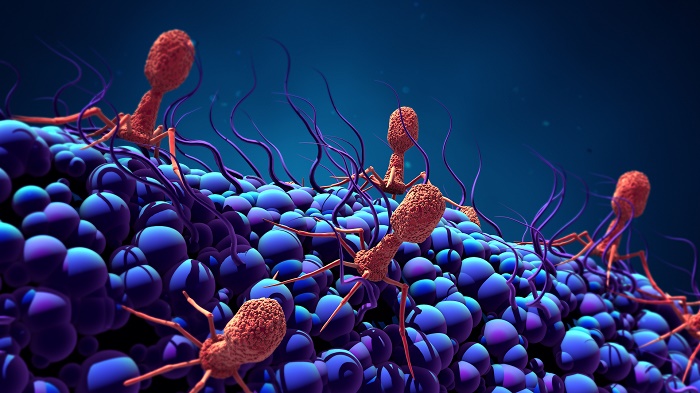Thanks to microbiology, knowledge of the different structures and composition of bacteria, as well as determining whether bacteria are unicellular or multicellular, It has allowed us to better understand how the relationships that bacteria maintain with the different organisms on the planet are. Thus, the advancement of the science of microbiology together with medicine, have allowed the understanding and application of different mechanisms of action for the development of antibiotics that allow to kill those bacteria that are harmful to both humans and the rest of animals and also for plant crops.
If you want to know the answer to the curious question: is bacteria a living or nonliving thing? Continue reading this article where you will find all the information you need to learn more about these mysterious microorganisms.
Is bacteria a living or nonliving thing?
Despite being invisible to the human eye and having different structures and functions than eukaryotic cells and multicellular organisms, science DOES recognize bacteria as living beings. In fact, they are one of the most primitive groups of living beings, that is, they appeared at the beginning of life on Earth.
What are bacteria?
Bacteria are single-celled microorganisms, made up of a single prokaryotic cell (from the Greek “pro”, primitive and “karyotic”, nucleus). The vast majority of bacteria are free-living, except those that are obligate intracellular life. However, all of them have mechanisms that produce energy and genetic material, both necessary for their growth and development.
Characteristics of bacteria
As we have already seen in the previous section, bacteria are prokaryotic unicellular microorganisms, but what other characteristics of bacteria can we observe?
- In their cellular structure, they lack membrane-bound intracellular compartments, and their DNA is always circular and closed.
- They have a resistant cell wall that allows them to survive in extreme environmental conditions. Fimbriae, pilis or flagella appear on this wall, which bacteria use to communicate with each other, as well as to perceive chemical information from their environment, or even to move around in aqueous environments.
- The reproduction of bacteria is always asexual and is carried out by a simple division method known as binary fission (as opposed to the mitosis division process used by eukaryotic cells). Thus, during binary fission, the cell that makes up the bacterium grows and forms an intracellular protein septum, which will allow the formation of two daughter cells, which contain an identical duplicate of the stem cell genome.
- Most bacteria multiply rapidly, forming colonies of bacteria in a few hours, provided they have a temperature and atmosphere that favors their development.
- The variety of bacterial families that exist in nature is really extensive and varied. In the next section, we will see what types of bacteria exist and how we can group them.
Bacteria types
By observing bacteria with different chemical colorations under the light microscope, it is possible to identify their structures and shapes. In this way, it is possible to classify the types of bacteria as follows:
- Spirilos (spiral).
- Coconuts (spherical or oval).
- Bacilli (cylindrical or rods; straight or curved).
On the other hand, it is possible to differentiate two large groups of bacteria according to the environment in which they live and the absence/presence of peptidoglycan in their cell walls:
- Archaeobacteria: They lack peptidoglycan and live in anaerobic and acidic environments with high temperatures, such as the deep sea.
- Eubacteria: They have peptidoglycan in their cell wall. They live freely in multiple environments such as soil and water; but also inside living organisms. This group includes bacteria of medical interest, green and purple photosynthetic bacteria, as well as cyanobacteria.
Examples of names of bacteria and diseases they produce
To get a closer look at some of the most abundant and well-known bacteria, let’s look at some of the names of the bacteria and the diseases they cause:
- Botulism: Clostridium botulinum
- Diphtheria: Corynebacterium diphtheria
- Cholera: Vibrio cholerae
- Gastritis: Helicobacter pylori
- Gonorrhea: Neisseria gonorrhea
- Leprosy: Mycobacterium leprae
- Meningitis: Neisseria meningitidis
- Pneumonia: Staphylococcus aureus
- Plague: Yersinia pestis
- Salmonella: Escherichia coil
- Tetanus: Clostridium tetani
- Whooping cough: Bordetella pertussis
- Tuberculosis: Mycobacterium tuberculosis
Are bacteria good or bad?
Despite all the disease-causing bacteria we have seen in the previous section, there are also a large number of species of bacteria that create symbiosis and positive relationships with living things. Learn more about What is symbiosis in ecology and biology with examples here.
Therefore, we can affirm that bacteria are living beings and good and bad microorganisms, depending on the species of bacteria and their relationship with one or another living organism. Thus, within the beneficial symbiotic relationships in which some bacteria participate, we can highlight:
The bacterial flora present in the digestive system of humans and other animals such as ruminants. Nodulating nitrogen-fixing bacteria that live in the root nodules of leguminous plants. Bacteria from probiotics frequently used as supplements in the diet. Bacteria that live in association with algae for water decontamination and in the decomposition of bioplastics.
You may also like to read https://hippicks.co.uk/

